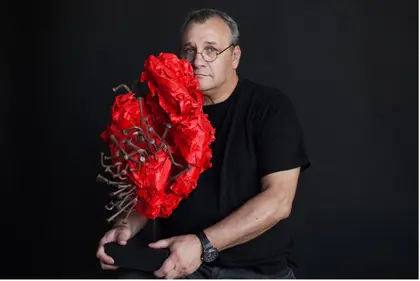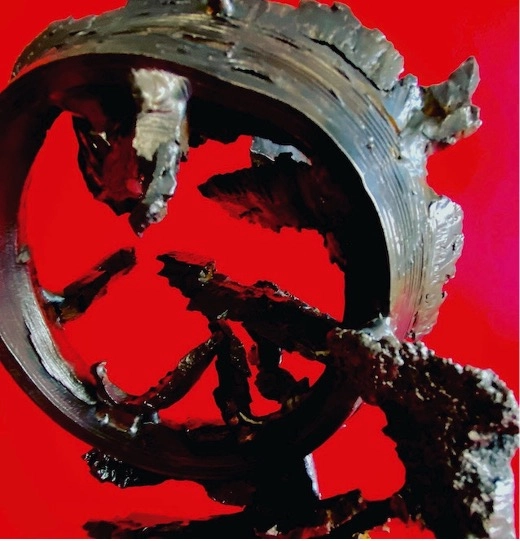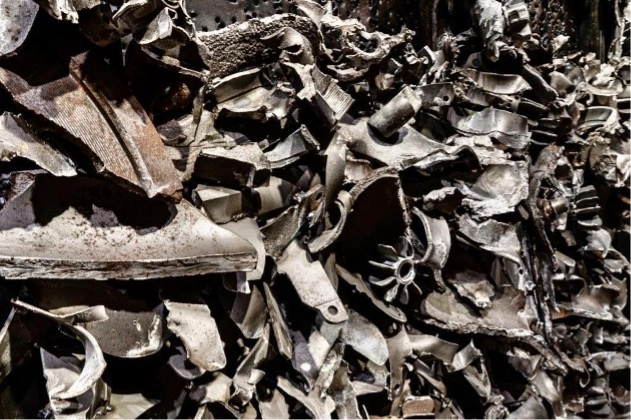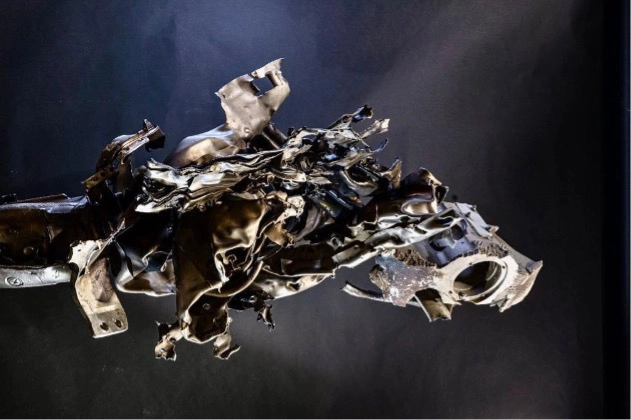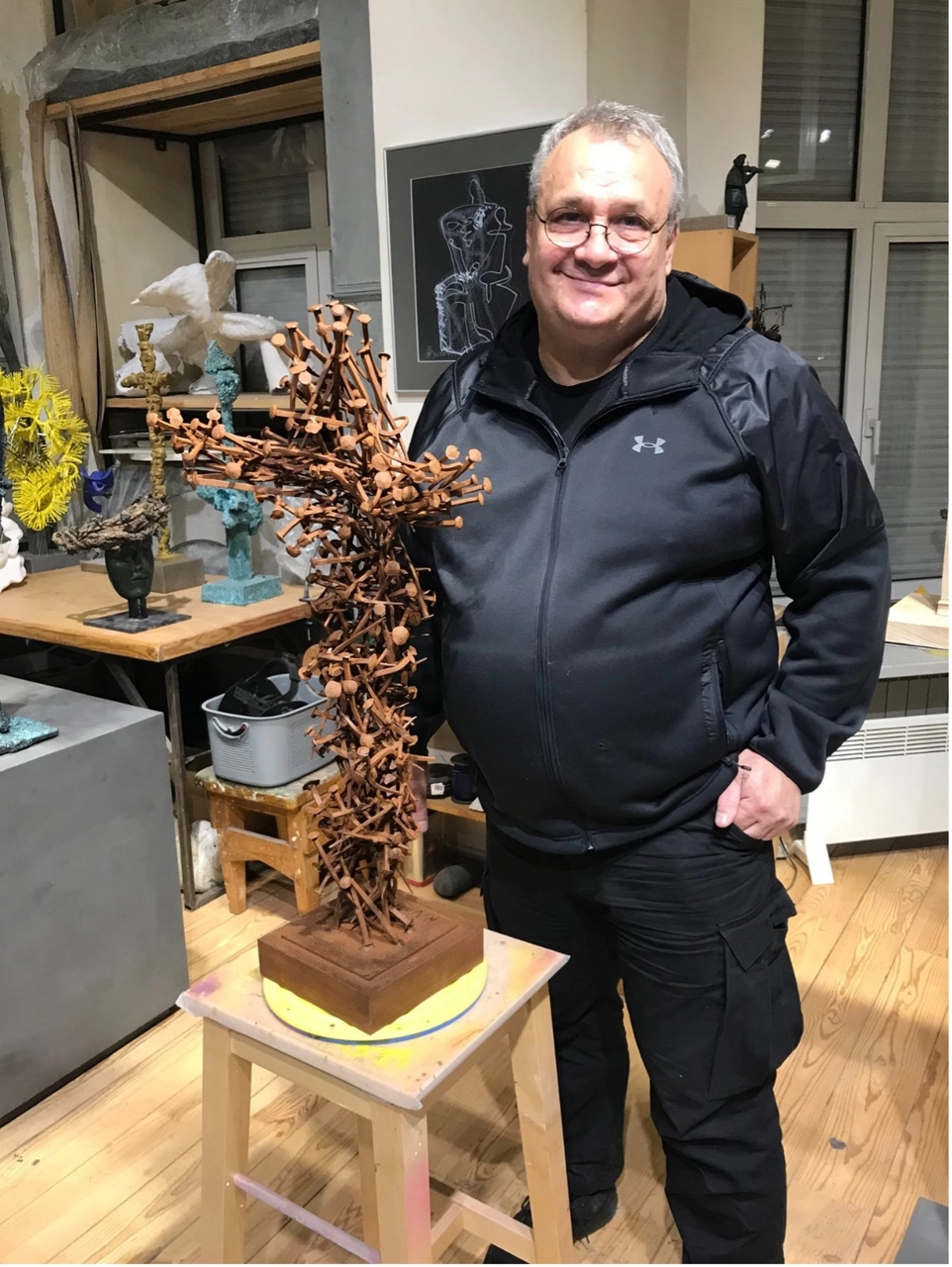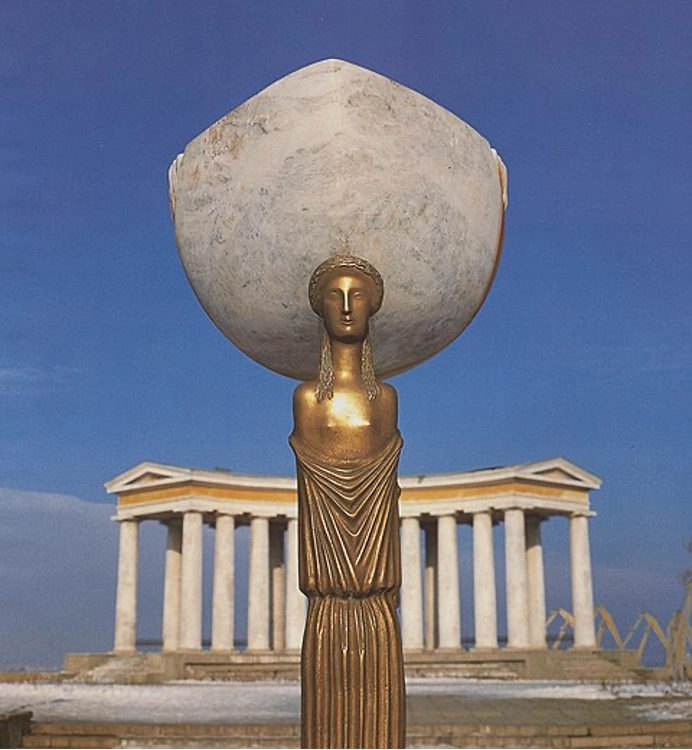It’s rare to come across someone who seems to turn everything they touch into a work of art, charged with meaning beyond physical matter.
Mikhail Reva is unquestionably such an artist. A big man, now 64, he looks as if he’s spent his whole life hewing stone and casting bronze. And he more or less has.
JOIN US ON TELEGRAM
Follow our coverage of the war on the @Kyivpost_official.
Within minutes of greeting me in one of his studios in central Odesa, Reva shows me around the loft space full of works in progress – generally smaller works. For more monumental projects requiring cranes and equipment, he has workshops outside the city.
“The scar of war.” Photo courtesy the Reva Foundation
Behind the office, there’s an open space with several sculptures in various stages of completion. Reva indicates one as he plunges his hand into a box full of bullets whose tips have curled into flowers. It’s a project he’s working on in collaboration with Italian designers Antonio Battaglia and Marco Andreoni, who founded In Barberia, a brand that produces individually designed eyeglass frames.
The supersized eyeglass sculpture opens to form the Cyrillic letters X and B, (the initials of Christ is Risen). The surface of the frame is sown with the bullets curled into flowers. It’s a monument to vision, transformation, resurrection.
“Only a free person can transform, create. How can a slave make beauty?”
Well before the war, Reva was already Ukraine’s most sought-after sculptor. His large-scale works can be found in public spaces all over Odesa and Kyiv.

Kateryna Bilokur, the Genial Self-Taught Painter Who Loved Flowers More Than Life
Even though he has produced numerous paintings, Reva has always preferred to work in three dimensions. “I wanted to sculpt because sculpture was conservative,” he says. “It was for monuments and ideology. Whereas I wanted to turn it into something human, for people.”
“Ukrainian Soil After Russian Bombing.” Photo Courtesy the Reva Foundation
The desire to transform what’s already there, what seems immovable, has become Reva’s vocation in life.
For him, the process of transformation is intimately tied to freedom. “I’m stiving for a rebirth of inner freedom. Only a free person can transform, create. How can a slave make beauty?”
And the freedom he aspires to is grounded in being fully human. “We’ve become sterile without emotions,” he says. “Art has to stir the soul.”
“Remains of a Rocket.” Photo courtesy Reva Foundation
Today, the immovable fact of life that Reva faces is war. In the early morning hours before visiting his studio, Odesa was hit by Shahed drones. It’s become a common occurrence.
Shortly after Russia launched its full-blown attack on Ukraine in February 2022, Reva’s dacha outside Odesa was hit by debris from a missile. He and his neighbors gathered some of the pieces of metal lying around, which inspired him idea to create a metaphor.
Less than two years later, his sculptural works made of war debris were on display in Paris, at an exhibition hosted by the US Embassy’s Hotel de Talleyrand as part of an initiative by the US to reengage with UNESCO.
Reva with “The Memory of the Crucified,” made with nails from obliterated churches. Photo by Stash Luczkiw
While his earlier works covered a vast range of styles and subjects – often given to ironic humor, but always executed with deft craftsmanship – his sculptures since the war are jagged and cutting, reflecting that unsettling beauty that springs from travail.
“The Memory of the Crucified,” a cross composed of nails recovered from churches mangled by Russian attacks, is particularly striking. As is “Aggressor,” described by one critic as “a boldly sexualized sculpture featuring a missile provocatively positioned, [that] captures the profound essence of defiance against aggression.
1993 The fountain “Source of Life” dedicated to the 200th anniversary of Odesa. Photo: Wikicommons
In 2015, Reva helped establish the Reva Foundation to support and develop the unique Odesa subculture, art, and cultural heritage. Since the full-scale war it has expanded to raise awareness of the ongoing cultural destruction Russia keeps inflicting on Ukraine.
Reva puts it simply: “In Ukraine, we’re fighting for the world. But God exists, and he won’t let the land descend into darkness again.”
You can also highlight the text and press Ctrl + Enter


